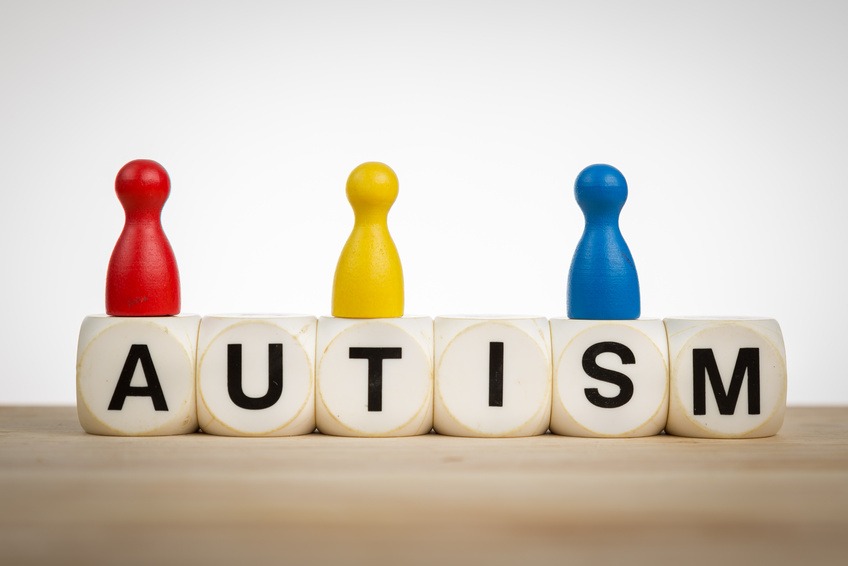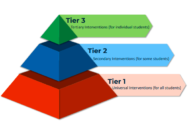By Shaima AlHosani & Ebtihal Mohsin Saleh
SCHS Nurse Unit
Read also: The Link Between Physical Abuse and Uric Acid Levels in Autism -part 1
2.1 Research Studies on Physical Abuse and Uric Acid in Autism
We recruited participants for this study through various clinics, support groups, and other resources for families of children with autism. The Autism Diagnostic Interview-Revised and the Autism Diagnostic Observational Schedule confirmed the diagnosis of autism, while the Pervasive Developmental Disorders Screening Test-II and the Child Symptom Inventory-4 ruled out other developmental problems. Medical records and administered questionnaires also confirmed the diagnoses. We contacted the parents of confirmed autism participants and thoroughly explained the study to them.
Once the parents consented to participate, we mailed them a set of questionnaires to complete regarding their child’s behavior. All children who participated in the study underwent a physician-supervised physical examination and venous (antecubital or hand) blood draw to assess their uric acid levels.
Kennesaw State University recruited control children from the general community. Additionally, Kennesaw State University recruited a subset of participants to provide genetic specimens during the same visit as uric acid measurements. Between June 2003 and December 2005, all participants completed both physical abuse and uric acid testing between the dates of June 2003 and December 2005. Control children were specified as those having a normal intellect and who were without any known autism spectrum disorder. (McKenzie et al., 2020) (Kamali et al., 2022).
There are 2.2 factors that influence the levels of uric acid in individuals with autism.
There are numerous behaviors, biological conditions, and environmental exposures that might lead to increased uric acid in autism. The consideration of these factors is not only significant for understanding the etiology of uric acid variation in autism but also for understanding the methodology for coming up with the result that physical abuse can result in increased uric acid. A noteworthy proportion of research on hyperuricemia is in the area of nephrology, and studies have shown that people with kidney disorders have elevated uric acid, regardless of the state of hydration.
Autism is currently the most common cause of childhood nephritis, and another predictive variable of uric acid is the use of diuretics, which is often a treatment for people with kidney problems, even though no data has been found showing typical use of diuretics in autism. An examination of 81 participants with special needs (aged 55–83 years), of whom 74 had a diagnosis of autism, compared uric acid levels in the morning to whether use of drugs that affect uric acid was administered, and this showed to be an independent variable with the five subjects taking allopurinol having lower uric acid.
Nevertheless, there has been little research on medications and their effect on uric acid levels in autism. As the author of this article is aware, there has been no research on allopurinol. The different medications and drugs abused by persons with autism to self-medicate for quickly increasing psychiatric needs, a mode of coping with environmental stress, can vary from illegal substances to overuse of prescription medication.
It is believed that illicit drugs can cause altered xanthine oxidase activity, thus raising uric acid, whether this is due to increased purine catabolism or enzyme inhibition by the drug. Overmedication with drugs such as aspirin can compete with uric acid for renal clearance, thus lowering serum uric acid. Measures of drug and medication abuse in persons with autism compared to uric acid levels have the potential to identify substances causing an increase in uric acid and, by recognizing harmful medication, state reasons for the person with autism to desist from such damaging behavior. High fructose intake has also been associated with increased uric acid, and people with autism on a strict dietary regime, in which sugar and sweeteners are often a mode of calming behavior, may be consuming an increased amount of fructose.
Last year, there was a study that identified a positive association between hyperuricemia and low cognitive function, which is often an effect seen in abused people with autism. The subjects received urate-lowering gout therapy at the hospital, and the treatment article demonstrated that either xanthine oxidase inhibitors or uricosuric agents can lower blood uric acid in all patients with gout, including those with neurological disease.
Though it’s not clear what the treatment feasibility would be for abuse-related cognitive injury, it is an alternative method for reducing increased uric acid in abused individuals with autism. In animal models, allopurinol treatment has been effective in preventing acute renal failure following traumatic injury, and a combined therapy with allopurinol and the antioxidant oxypurinol has shown positive results in preventing progressive renal failure after physical damage.
Although there are no specific studies on renal damage and uric acid in abused persons with autism, raised serum and urinary uric acid and urate retention are common findings in patients with renal disease. In order to prevent further disability in such patients, it may be necessary to prevent or treat a potentially harmful condition with urate-lowering therapy, as uric acid can compound a disease state that affects renal and cardiovascular function. (Brown, 2023) (Fujii et al., 2023) (Üblagger et al., 2024)
2.3 Mechanisms Explaining the Relationship between Physical Abuse and Uric Acid
In order to understand and explain the observed trend from previous studies, it is important to identify the possible mechanisms responsible for the increase in uric acid levels in individuals who have experienced physical abuse. One possible explanation is the increase in purine degradation in response to muscle damage.
The oxidation of ATP produces uric acid, the end product of purine metabolism. The enzyme 5’nucleotidase breaks down ATP to AMP, and the enzyme AMP deaminase then metabolizes AMP to uric acid. One study has shown that physical abuse is correlated with increased urinary levels of 5-hydroxyindoleacetic acid and vanillylmandelic acid, which are metabolites for serotonin and norepinephrine, respectively. AMP deaminase is stimulated by an increase in intracellular levels of serotonin and norepinephrine; thus, it is possible that increased degradation of these neurotransmitters leads to increased uric acid production in individuals who have experienced physical abuse.
Another possible explanation is that the increase in uric acid production is an immune response to muscle damage. Uric acid has known anti-oxidative properties, and several studies suggest that an increase in uric acid is a protective and compensatory mechanism in response to tissue damage and oxidative stress. One study found a profound increase in uric acid levels in rats injected with adjuvant that caused chronic paw muscle inflammation, while another study found increased uric acid levels during exercise in a cold environment that caused muscle tissue damage.
It was also found that in the rats injected with adjuvant, the increase in uric acid was due to increased activity of xanthine oxidase as a result of the immune response to tissue damage. This suggests that uric acid is increased in an attempt to mitigate the effects of tissue damage and oxidative stress, and the increased uric acid in individuals with chronic muscle damage is due to a sustained increase in xanthine oxidase activity. Given that mitochondrial dysfunction and oxidative stress are known findings in individuals with autism and that mitochondrial dysfunction is thought to be increased by environmental stressors, it is possible that an increase in uric acid as well as heme oxygenase expression may be an attempt to mitigate the effects of oxidative stress from physical abuse in individuals with autism. (DeLouize et al., 2022). (Gangi and Howe, 2022).
To Be Continued ……….
SHAIMA ABDALLA ALHOSANI
- Master’s in Nursing
- Bachelor of Science in Nursing
- Acting as a Head of nurse and Member of the Health and Safety Committee in Sharjah City for Humanitarian Services (SCHS) 2023 – Current
- Acting as a Head of the Health Care Department in Sharjah Education Council 2020-2023
- School nurse and team leader in Sharjah Education Council 2012-2019
- Member of the Youth and Adolescent Health Committee
- Member of executive Business Continuity Committee of the Sharjah Education Council
- Member of the ISO Committee of the Sharjah Education Council
- Member of the National Bullying Committee
- Member of the Child Friendly Schools and Nurseries Committee
- Member of the Evaluation and Follow-up Committee for the Covid virus in schools and nurseries
- Member preparing an initial draft of the draft optional UAE standards “Preventing and Combating Bullying.”
- Member of the Sharjah Occupational Health and Safety Standards Team in the education sector
- Member of the Sharjah Occupational Health and Safety Standards Team in the education sector
- First Line of Defense Ambassadors Award
- Volunteer opportunity to take pride in science offered by the Sharjah Education Council to contribute to the organization of virtual awareness activities and programs for community members
- Volunteering Opportunity Volunteer for the endowment offered by the Endowment Department to contribute to reviving the endowment year among community members
- American Heart Association Basic Life Support for Health Care Professional Course
- Diploma in Professional Trainer Preparation
- Adult Mental Health First Aid course by The Light House
- The ICF Coaching program (74 hrs.) by Leadership Works
Ebtihal Mohsen Saleh
- Bachelor of Nursing
- Imperial Diabetes Educator Course : diabetic educator
- Ibn-Khaldun private school as a school nurse for 8 months
- Sharjah government as school nurse in Sharjah city for humanitarian services since 1/8/2012 until present dealing with different cases of Students with Special need such as Down syndrome, autism, cerebral palsy and mental retardation and some other with psychological and mental disorders as well as DIABETES and Epilepsy cases
- Provide immunization for different age groups according Ministry of Health schedule such as: STUDENTS (Td, DTap, MMR, Varicella, OPV and Rabies vaccine)
- Work during summer time in clinics such as: Waset and Sharjah health center, hospital such as al Kuwait and Alqasmi, nursery such as al Rahmania nursery and al Shaimaa nursery for 7 years.
- Work during covid crisis in al-riq’a clinic and waset clinic for 6 months
- Work as Coordinator of Nursing Licenses for nurses In Sharjah education council and Sharjah City for Humanitarian Services since 2017 until 2019
























